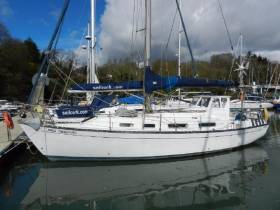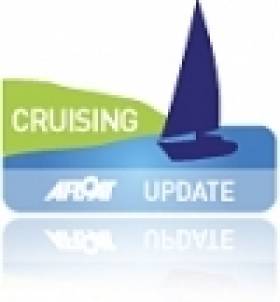Displaying items by tag: Grampian 34
Yachts For Sale: Grampian 34 – A Sensible Solid Sailing Cruiser
1978 may now seem a very long time ago if you’re looking at used boats. But they built them well back then writes W M Nixon, over-strength if anything. And many of them were built with solid accommodation to match their solid construction, such that a good 1978 cruiser will be comfortable to be aboard at sea, yet in port she’ll feel like a proper sailing boat rather than a nautical variant on the latest line in trendy tapas bars.
The Grampian 34 is the very epitome of the no-nonsense cruising boat of the late 1970s. In her original version she was drawn by George McGruer, the specialist Scottish yacht designer who was best known for his individualistic offshore racers which were built in the family firm’s boatyard of McGruer & Sons on the shores of the Gareloch off the Firth of Clyde in Scotland, where his father James had been renowned for creating the classic International 8 Metre Cruiser/Racer Class, most of which he designed and built.
Yet son George, best known for crafting and building the likes of the 42ft Tritsch-Tratsch I for Otto Glaser of Howth in 1971, and then the 47ft Tritsch-Tratsch II for the same owner in 1973, was game for the fibreglass challenge. But while the Grampian 34 was moulded commercially by GRP specialists, as the McGruer yard was destined to be re-worked as an attractive up-market shoreside housing development, the new Grampian 34 was finished in style by Porter & Haylett on the Norfolk Broads in eastern England.
Subsequently the moulds went to Canada, where the Grampian 34 appeared in a ketch-rigged version. But the Porter & Haylett original is a hefty 34ft sloop which in this case is on sale through Crosshaven Boatyard at €32,500. The most notable variant from the comfortable original is that she has been made even more comfortable by the addition of a fixed sprayhood, while below there’s a roomy galley, yet she still in her 34ft of overall length finds space for six full-size berths.
When a boat is 38 years old, your first concern is that the auxiliary engine will be the original. But in this case, the good news is that the original slightly undersize motor was replaced with a 28hp Betamarine B-28 in 2008, a powerpack which manages to be both reliable while at the same time providing notably reduced sound levels for a better power output.
This boat has been in the same ownership for 15 years, and has been much loved and well looked after. She’s a real cruising yacht with 60 metres of chain and a grown-up Lofrans 500w anchor windlass to handle the sensible ground tackle which is essential for proper cruising in Irish waters, regardless of the fact that visitors’ moorings are proliferating.
As to performance, while the Grampian 34 won’t break speed records, she has in her time given a good account of herself in club racing and passage events, and she has a hull form which guarantees a good average speed at sea. That, combined with her comfortable accommodation, makes this a boat well worth thinking about if genuine cruising is your main interest.

























































